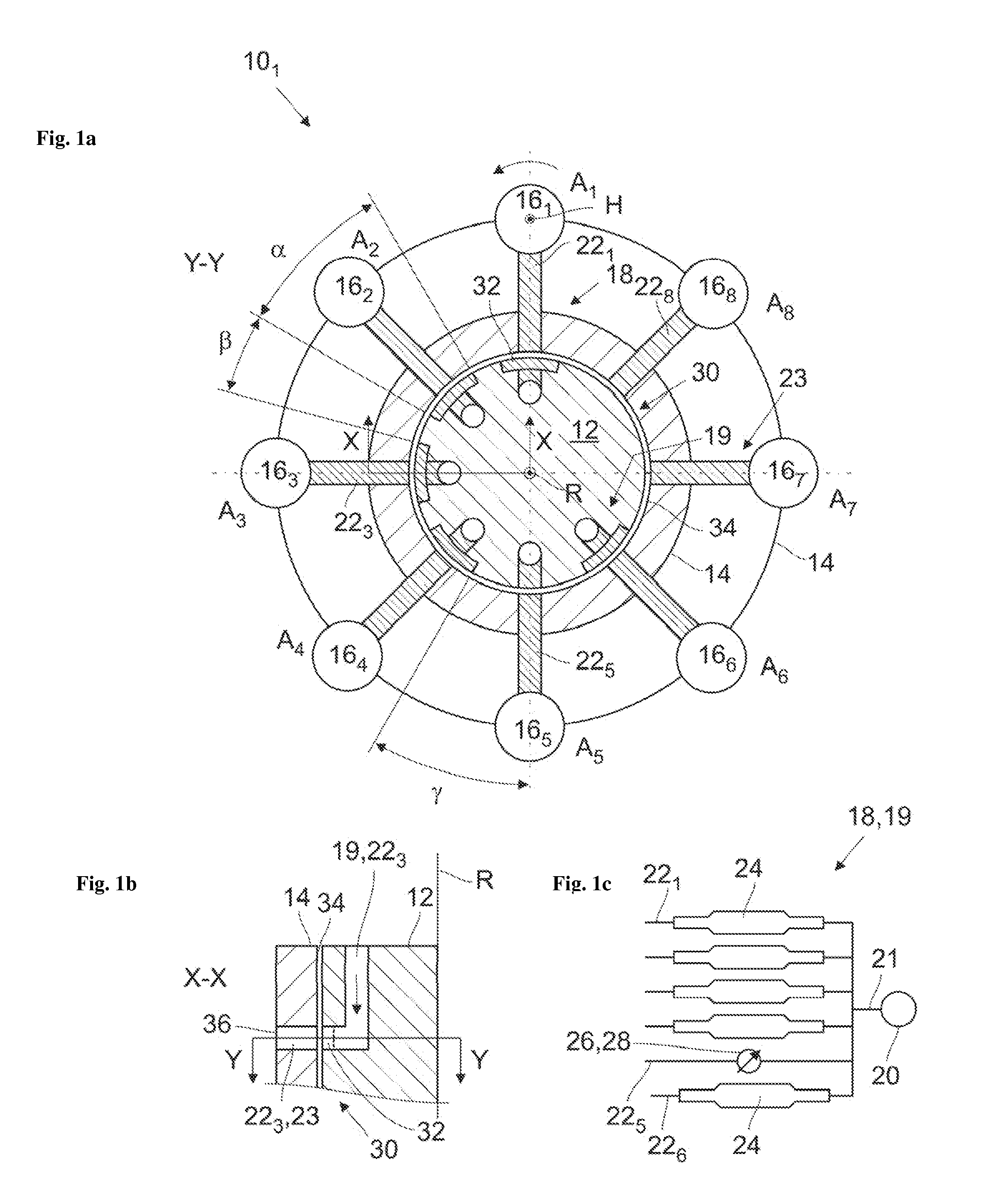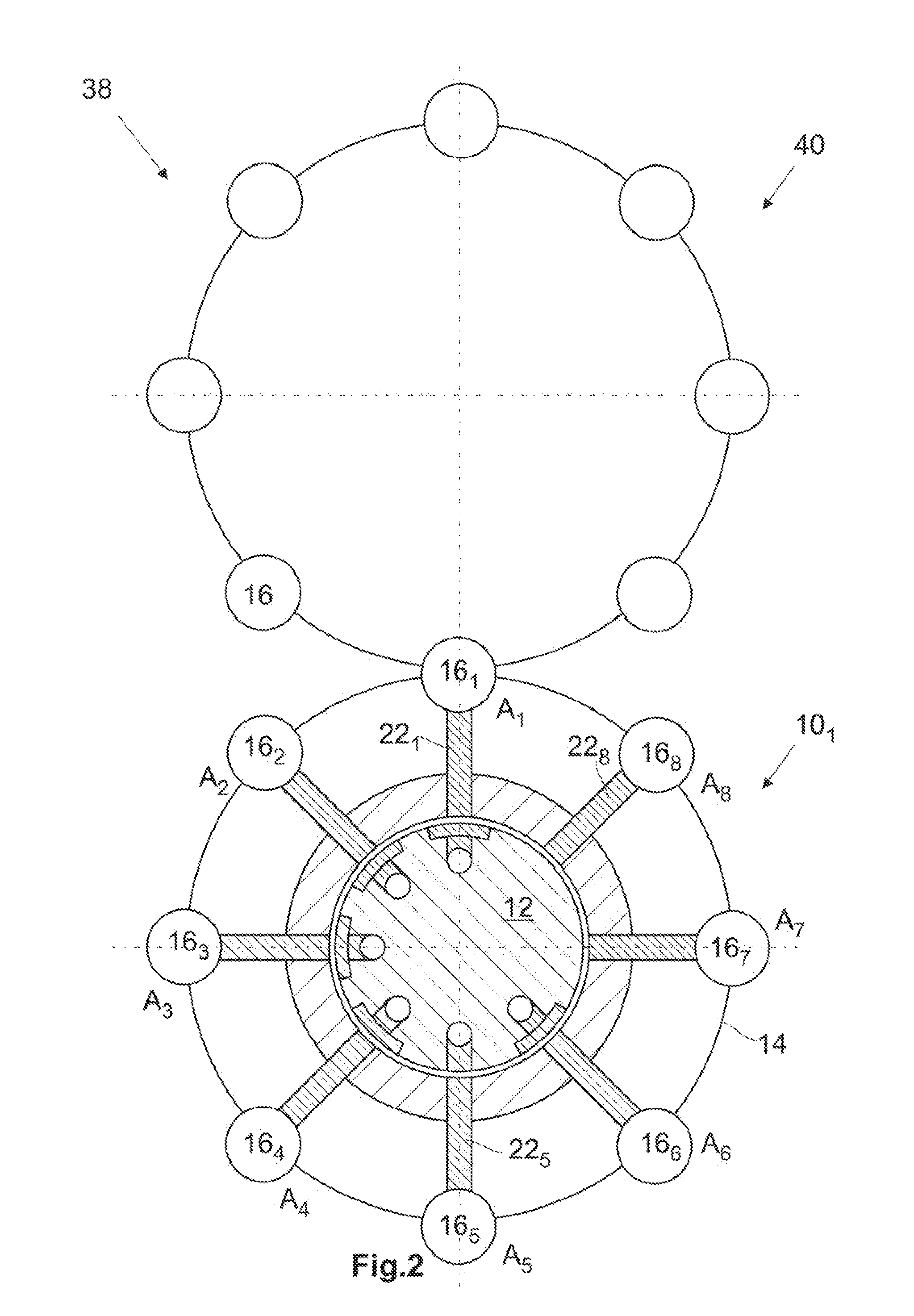Glass processing device and bottom machine therefor for manufacturing glass containers
a glass container and processing device technology, applied in glass tempering devices, manufacturing tools, instruments, etc., can solve the problems of not being able to feed air or other gas into glass tubes, the wall thickness of blowing methods is variable, and the delamination tendency in some regions is not reduced, and the delamination tendency is noticeably reduced
- Summary
- Abstract
- Description
- Claims
- Application Information
AI Technical Summary
Benefits of technology
Problems solved by technology
Method used
Image
Examples
Embodiment Construction
[0056]Illustrated in FIG. 1a is a bottom machine according to the invention, 101, in accordance with a first exemplary embodiment. The bottom machine 101 has a stator 12 and a rotor 14, which is arranged radially outside of the stator 12. The rotor 14 is arranged concentrically to the stator 12 and can rotate by means of a drive unit, which is not illustrated, around an axis of rotation R, which, during operation of the bottom machine 101, coincides essentially with the effective direction of the force of gravity. The rotor 14 comprises a number of holding units 16, each of which has a clamp chuck, which is not illustrated in greater detail, in which a glass tube, which is likewise not illustrated in greater detail, can be clamped. The holding unit or the clamp chuck can rotate around its own axis H. In the example illustrated, the rotor 14 has eight holding units 161 to 168. Furthermore, the bottom machine 101 has a duct system 18, with which a gas, such as, for example, air, can b...
PUM
| Property | Measurement | Unit |
|---|---|---|
| temperature | aaaaa | aaaaa |
| temperature | aaaaa | aaaaa |
| length | aaaaa | aaaaa |
Abstract
Description
Claims
Application Information
 Login to View More
Login to View More - R&D
- Intellectual Property
- Life Sciences
- Materials
- Tech Scout
- Unparalleled Data Quality
- Higher Quality Content
- 60% Fewer Hallucinations
Browse by: Latest US Patents, China's latest patents, Technical Efficacy Thesaurus, Application Domain, Technology Topic, Popular Technical Reports.
© 2025 PatSnap. All rights reserved.Legal|Privacy policy|Modern Slavery Act Transparency Statement|Sitemap|About US| Contact US: help@patsnap.com



